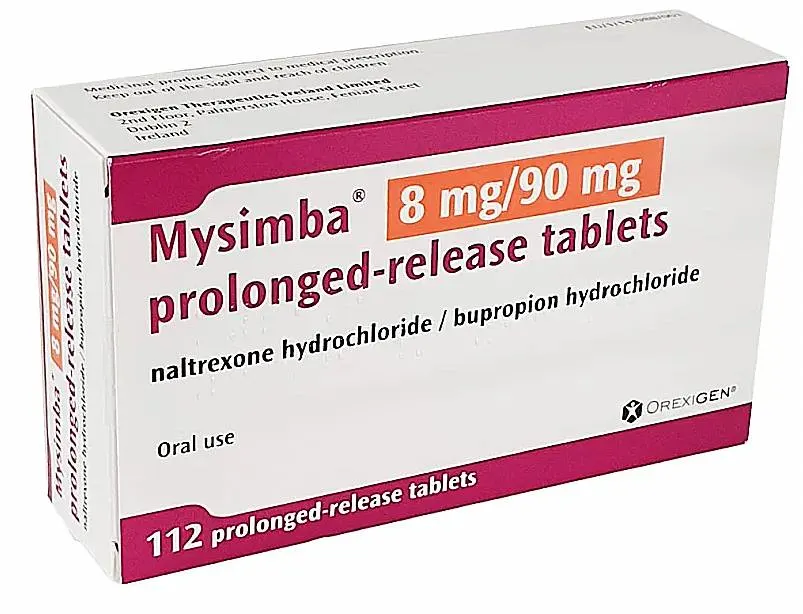
Mysimba
Mysimba is a prescription treatment to support weight management in adults with obesity, or overweight with related health risks, alongside diet and activity changes. It is often prescribed for people who struggle with food cravings and portion control. Many find it helps reduce appetite and maintain consistent, healthier eating patterns. To find out if it’s the right treatment for you, click on the ‘Start Consultation’ link below and follow the prompts.
Mysimba 8mg / 90mg | 112 Tablets | €229 | |
|---|---|---|---|
Mysimba 8mg / 90mg | 224 Tablets | €389 | |
Mysimba 8mg / 90mg | 336 Tablets | €509 |
What you need to know about Mysimba
It combines naltrexone (an opioid receptor antagonist) and bupropion (a norepinephrine/dopamine reuptake inhibitor) to influence appetite and reward pathways, helping reduce food cravings and intake.
Weight management in adults with obesity, alongside reduced‑calorie diet and increased physical activity, according to UK prescribing criteria.
By mouth, swallowed whole. It is titrated over 4 weeks. Do not crush or chew tablets.
Typical schedule: Week 1: 1 tablet in the morning; Week 2: 1 tablet morning and evening; Week 3: 2 tablets in the morning and 1 in the evening; Week 4 onwards: 2 tablets morning and 2 evening (maximum 32 mg naltrexone/360 mg bupropion daily), if tolerated.
Nausea, vomiting, constipation, headache, dizziness, insomnia, dry mouth, anxiety, increased blood pressure/heart rate. Serious: seizures, allergic reactions, suicidal thoughts, liver problems.
Avoid or minimise alcohol. Alcohol increases seizure risk and may worsen mood or sleep disturbances.
It offers modest average weight loss compared with lifestyle changes alone. GI side effects are common early. It may suit patients who cannot use GLP‑1‑based therapies; however, it is contraindicated in more conditions than GLP‑1 agents.
Seizures (higher with eating disorders, abrupt alcohol/benzodiazepine withdrawal, or interacting medicines), increased BP/HR, mood changes, liver issues, and risk of precipitating opioid withdrawal or blocking opioid pain relief.
Opioids (e.g., codeine, tramadol), MAOIs (and for 14 days after stopping), medicines that lower seizure threshold (e.g., certain antidepressants, antipsychotics, tramadol, quinolones), and strong CYP2B6 inhibitors/inducers. Check with your pharmacist.
Patient Information Leaflet, NHS weight management pages, and advice from your prescriber or pharmacist.
